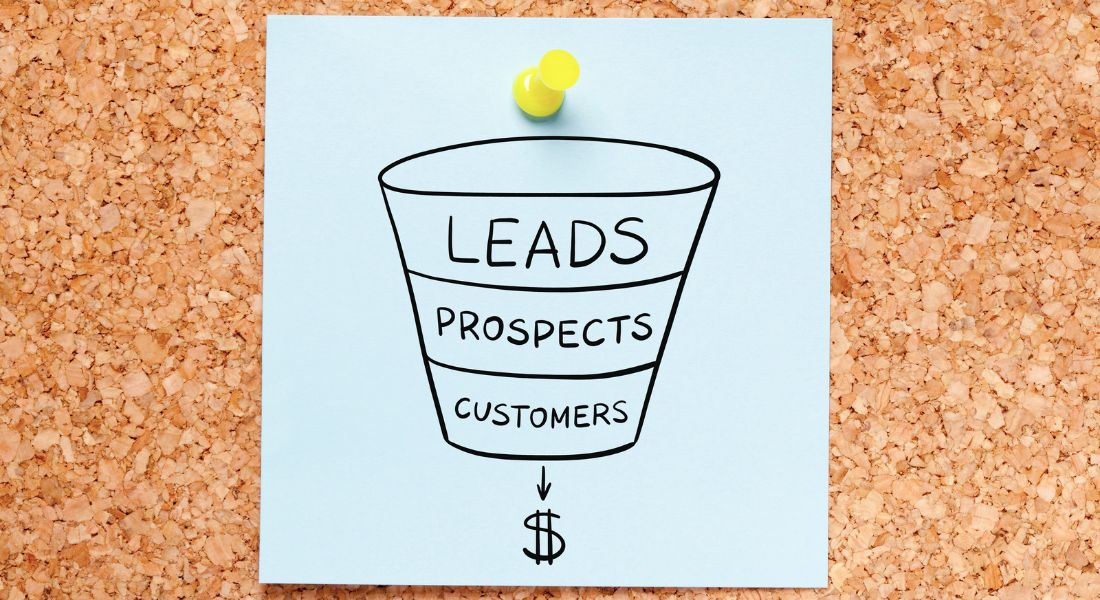Are you tired of your business crawling at a snail’s pace while you watch your competitors soar to unimaginable heights? You’re not alone! In today’s cutthroat market, generating leads is more crucial than ever. Ready to rev up the engine of your business success? In this blog post, we’ll reveal 10 fail-proof lead generation tips that will catapult your growth in no time. Your competitors won’t know what hit them, especially with the rising number of users relying on online resources for information.
Some effective lead generation tips for businesses include using multiple lead generation channels, creating high-quality content, focusing on personalization and engagement, utilising social media platforms, optimising your website and landing pages, leveraging customer referrals and reviews, and constantly analysing and adapting your strategy based on data-driven insights. By implementing these tips and best practices, businesses can effectively attract and convert potential customers into actual buyers, ultimately becoming a central part of their online journey towards finding the things they need.
Post Contents
ToggleIdentifying Lead Generation Opportunities
Generating leads is not just about picking a single hot topic and running with the idea; it takes a lot of effort, knowledge, and refinement in the process to get it right. The first step towards generating leads is identifying lead generation opportunities. A business must identify where its potential customers are spending time, how they interact with them, what problems they solve or could solve for them, and how their products or services match their needs.
Social media platforms are one of the most powerful lead generation tactics available today. For instance, Facebook offers paid ads that target specific demographics who may be interested in your product or service based on age, gender, interests, or behaviours. LinkedIn has a vast database of professionals where you can establish genuine relationships that can foster an exchange of ideas and contacts for leads. Twitter and Instagram are great to promote brand awareness and connect with people who share similar interests. By making use of video content, you can even further engage your audience and drive traffic to your site.
Besides social media platforms, there are other ways to identify potential opportunities for lead generation. One way is by analysing competitors’ websites, social media pages, or advertisements to see what they’re doing that might work for your business as well. Another approach is through SEO strategy development based on research around industry keywords customers use to find solutions to their problems. Utilising tools like SEMrush or Google AdWords can help uncover these valuable insights and opportunities for leads.
Think of fishing as finding new leads – casting forth your bait into the water (the marketplace) hoping for a response (conversion). However, before getting down to fishing, fisherman plan out their fishing trip by researching which type and size of fish they want to catch and what kinds of baits work best for those fish types. Similarly, businesses should do some market research before starting any lead generation campaign.
Some experts argue that relying heavily on lead generation tactics will not guarantee success if there is not a well-defined target group based on needs and behaviours. They advocate for a more inbound approach to lead generation, where customers come to businesses based on their interests in the content they have produced. While this can be effective, it takes longer to get traction and establish results.
Identifying potential opportunities is just the first step towards successful lead generation. Consistently refining your approach and monitoring the performance of your strategies will ensure you remain ahead of the competition and continue to nurture and convert leads that truly align with your business goals.The next stage involves analysing your business needs and goals, employing various methods to paint a clear picture of your desired outcomes.
- According to a 2020 survey by the Content Marketing Institute, 85% of B2B marketers indicated that lead generation was their most important content marketing goal.
- A study published in Harvard Business Review found that companies with effective lead nurturing strategies generate up to 50% more sales-ready leads at a 33% lower cost.
- Research by HubSpot indicates that companies focusing on inbound lead generation rather than outbound methods could experience a 60% lower cost per lead.

Analysing Your Business Needs & Goals
Identifying opportunities for lead generation can provide crucial information about your customers’ potential value to your business, as well as links between their preferences and your offerings. Analysing your business needs and goals can help ensure that you are marching in the right direction, addressing your specific needs rather than chasing ‘just another good opportunity’ that may not be the best fit.
For instance, if you run a graphic design agency that specialises in designing websites for small startup companies, knowing which small businesses belong to the fast-growing category of startups can help you hone-in on where to focus your efforts. An analysis tailored around customer behaviour data or customer acquisition cost projections may ultimately reveal better targets among smaller firms who share similar attributes with existing clients and are at the top of their growth stage.
A serious data strategy is needed in order to analyse business needs and goals effectively. Metrics such as website traffic and engagement rates tell you which pages or social media posts are catching attention, while visual images of data breakdowns offer clearer insights. CRM (customer relationship management) systems will detail customer interactions with vendors and your front-line support, while utilising tools like Google Analytics enables measurement of conversion rates by channel, landing page, or device used for conversions.
If lead-generation identification was fishing in open water, then analysing your business’ needs and goals would be closer to fly fishing – using specific techniques to cast accurately at specific fish. Careful testing of different kinds of bait (lead generation tactics), identifying the right locations (potential customers), how fast or slow one should reel in (lead follow-up timeframes), all matter in catching specific fish (desired customers), and increasing the chance of success.
On the other hand, some might argue that data analysis methods such as these only work for specific industries or for larger companies with more significant customer data sets. Smaller businesses, often on a budget, lack the resources or technical expertise to run sophisticated programs. They also argue that simpler market research could provide enough insight into audience needs, wants and behaviour – all of which could help refine lead generation efforts.
- Identifying opportunities for lead generation and analysing business needs and goals can help businesses focus their efforts on specific target groups and ultimately generate better leads.
- A serious data strategy that includes metrics such as website traffic, engagement rates, CRM systems, and tools like Google Analytics is necessary for effective analysis. While some argue that these methods only work for larger companies with significant customer data sets, simpler market research could still provide enough insight to refine lead generation efforts.
- Like fly fishing, careful testing of lead generation tactics, identifying potential customers, and determining appropriate follow-up timeframes are critical in catching specific desired customers.
Effective Methods to Generate Leads
Lead generation is an essential element of any business. Without leads, the sales process stagnates, and a company may struggle to reach its goals. While there are dozens of lead generation methods, some are more effective than others. Let’s take a look at some of the most effective methods to generate leads.
One effective strategy for lead generation is creating gated content such as eBooks, whitepapers, and webinars. Gated content is content that can only be accessed after providing contact information. To encourage customers to provide their information in exchange for access to gated content, it must offer significant value. Use relevant topics that address your audience’s needs and interests. Once you have their information, utilise email campaigns or daily newsletters delivering further value propositions that will turn them into loyal customers.
Another excellent way of generating leads is by using Pay-Per-Click (PPC) advertising. With PPC ads, businesses place ads on search engines and social media platforms and only pay when someone clicks on the ad. To make sure your PPC ads bring in leads, ensure they are well-written and catered to specific keywords or audience groups – this often requires thorough research and continuous optimization to stay a step ahead of the competition.
Although some may argue that cold calling is not as effective as it used to be, it still has the potential to generate high-quality leads if done correctly. Utilise extensive research on potential clients before making calls so that you’re not wasting time talking to someone who has no interest in your product or service. Remember that each interaction is a piece of your sales funnel, and anything you can do to guide visitors to the next level can help move them from readers to paying customers.
Think of lead generation like fishing – you need the right bait to attract the right fish. Valuable content is your bait in this situation – a great hook that draws those fish closer to bite. The goal is not quantity but quality; five good leads will get you one sale while 50 unqualified leads will waste your sales team’s time and money.
Now that we’ve looked at some of the most effective methods to generate leads, let’s dive into how social media can help.

Social Media Strategy & Tactics
Social media has emerged as a crucial tool for businesses today. And using social media for lead generation is an opportunity many businesses are missing out on. Social media networks such as Facebook, Twitter, LinkedIn, and Instagram can connect you with B2B or B2C customers, allowing your brand to maximise exposure and plays an essential role in generating leads. These platforms, combined with the right software, can turn your visitors into leads on an unprecedented level.
Start by identifying your target audience, then build your social media strategy around them. Create engaging content, post regularly on platforms where your audience tends to gather, and ensure consistence in your brand voice and values across all channels. Watch how they engage with your content and adjust accordingly to increase engagement – which could lead to higher conversion rates.
One key tactic of successful social media lead generation is utilising hashtags – more specifically, branded hashtags. Branded hashtags distinguish you from other companies while providing insight into company values and what they offer. Branded hashtags also provide a tracking mechanism so you can monitor who is using them and make data-driven decisions based on user-generated data.
While it may be tempting to try every social media platform available to get leads, but it isn’t always necessary nor efficient. Instead, focus on two or three platforms where your target audience is most active. By having a focused approach towards specific platforms where your market gathers; improving your overall reach & engagement while still saving resources.
Think of social media like networking events: you need to network in the right place with the right people to get the return on investment. You wouldn’t go to a senior citizen event looking for millennial prospects just like you wouldn’t use Snapchat for B2B marketing purposes.
Now that we understand social media’s power, let’s move into how to convert your leads into customers.
Networking with Prospects & Contacts
Networking with prospects and contacts is crucial to generating high-quality leads that can help grow your business quickly. By building relationships and leveraging your existing network, you can establish trust and credibility with potential customers, opening the doors to new opportunities for your business.
One effective way to network with prospects and contacts is through attending industry events and conferences. These events provide opportunities to meet like-minded individuals who are interested in what your business has to offer. By striking up a conversation, exchanging contact information, and following up after the event, you can build genuine relationships that may lead to future business opportunities.
Another way to stay connected with prospects and contacts is through social media. Platforms like LinkedIn, Facebook, and Twitter allow you to connect with individuals who share similar interests or work in industries relevant to your business. You can engage with these individuals by commenting on their posts, sharing helpful information, such as an interesting article or a webinar, or reaching out directly via a private message. This not only helps in making a person feel valued, but also provides examples of your expertise so that they trust you and everything you have to offer.
In addition to attending events and using social media platforms, you can also leverage your existing customer base for referrals. Satisfied customers who believe in your product or service are likely to recommend it to others in their network. By offering incentives or rewards for successful referrals, you can encourage existing customers to spread the word about your business and generate new leads. This way, you can reap the benefits of having a loyal customer base.
For example, let’s say you run a digital marketing agency that specialises in helping small businesses increase their web presence through targeted advertising campaigns. You attend a local chamber of commerce event where you strike up a conversation with the owner of a nearby restaurant who is looking to attract more customers during off-peak hours. After discussing strategies for increasing foot traffic during those times, you exchange contact information and follow up later via email or phone. Through this initial interaction and subsequent conversations about how your agency can help solve the owner’s problem, you develop a relationship that leads to a successful partnership.
According to a study by HubSpot, businesses that prioritise relationship building and networking are more successful in generating quality leads than those that solely rely on online marketing tactics. In fact, 85% of small businesses reported that they generate most of their business through word-of-mouth referrals.
However, it’s important to remember that networking should be approached with authenticity and sincerity. While attending events and sending connection requests on social media can help expand your network, it’s crucial not to come across as pushy or insincere. Building strong relationships takes time and effort, so it’s important to approach networking with a genuine interest in getting to know individuals and their specific needs.

Converting Leads into Customers
Once you have generated leads through networking, social media, and other strategies, the next step is converting them into customers. This involves nurturing these potential customers and guiding them through the buyer’s journey until they make a purchase.
One effective way to convert leads into customers is through personalised email campaigns. By segmenting leads based on their interests and behaviour, you can create targeted email campaigns that speak directly to their needs. These emails should provide valuable information related to your product or service, address specific pain points, and offer incentives or promotions that encourage conversions.
Another tactic to convert leads into customers is through a thoughtful and user-friendly website experience. Your website should be optimised for lead generation with clear calls-to-action, easy-to-use forms for lead capture, and an overall design that instil trust and credibility in your business.
In addition to email campaigns and website optimisation, it’s important to focus on building strong relationships with prospective customers. Taking the time to understand their needs, being responsive to questions or concerns, and communicating regularly can go a long way towards establishing trust and credibility. By providing value through content marketing efforts like blog posts or downloadable resources, you can further solidify your status as a thought leader in your industry and attract more potential customers.
For example, let’s say you run an e-commerce business that sells sustainable clothing. A lead fills out a form on your website to download a guide on eco-friendly fabrics. Through email campaigns targeted towards this specific lead, you share blog posts about the impact of fast fashion on the environment, tips for reducing one’s carbon footprint through conscious shopping habits, and promotions for sustainable clothing lines. By taking the time to personalise your content and nurturing this relationship, the lead eventually makes a purchase and becomes a loyal customer.
According to HubSpot, personalised email campaigns can have an open rate 29% higher than non-personalised ones. Additionally, businesses that use marketing automation to nurture leads experience a 451% increase in qualified leads and report a 53% higher conversion rate compared to businesses that don’t use automation.
However, it’s important not to rely solely on email campaigns or website optimisation. As mentioned previously, building genuine relationships with prospective customers is crucial to converting leads into long-term customers. This requires genuine interest in their needs and goals and consistent communication throughout the buyer’s journey.
Nurturing Relationships and Increasing Trust
Nurturing relationships with your leads is often a long-term process that requires patience and a genuine interest in their needs. When you take time to build trust with your leads, they are more likely to become loyal customers and recommend your business to others.
Think of building relationships like planting a seed. Just as a plant needs water, sunlight, and nutrients to grow, relationships need attention and nurturing to develop. This means regularly checking in with your leads, offering them personalised information that addresses their concerns, and creating a positive customer experience at every touchpoint.
According to a survey conducted by Hubspot, 96% of customers say customer service is important when choosing which brands to support. Providing exceptional customer service is one way to nurture relationships with your leads and increase trust in your brand.
Another effective strategy for nurturing relationships is to provide valuable content that educates leads about your industry or product. This could include blog posts, whitepapers, or how-to videos that help prospects make informed decisions about your offerings.
Some businesses may be hesitant to invest in relationship-building because it takes time and resources without providing immediate results. However, focusing only on short-term gains can be detrimental to long-term success. By building strong relationships with leads, you create loyal customers who are more likely to make repeat purchases over time.
Think of building relationships as investing in a stock market portfolio. Just as diversifying your investments can help protect against losses and maximise returns, nurturing relationships with diverse leads can help protect against lost opportunities and maximise conversions.
Measuring Impact & Adapting Strategy
Measuring the impact of your lead generation efforts is essential for understanding what’s working well and where there’s room for improvement. This involves tracking metrics such as website traffic, lead conversion rates, and social media engagement to gain insights into audience behaviour.
According to a survey by SalesHacker, companies that track their lead generation metrics are 10 times more likely to achieve their revenue goals than those that don’t. By measuring the impact of your lead generation efforts, you can identify which strategies are driving results and focus on optimising those areas for continued growth.
Adapting your strategy requires being flexible and open to testing new approaches. One way to do this is through A/B testing, which involves running two variations of an element (such as a landing page or ad) to see which performs better with your target audience.
For instance, suppose you have a call-to-action (CTA) button on your website that says “Learn More.” You might test out different variations like “Get Started” or “Free Trial” to see which encourages more clicks from leads.
One potential challenge with A/B testing is that it requires a significant amount of data to determine statistically significant results. Making hasty changes without collecting enough data could lead to inaccurate conclusions and ultimately harm your lead generation efforts.
Think of measuring impact and adapting strategy as fine-tuning an instrument. Just as a musician must rely on their ears and adjust the tuning of their instrument in response to the music being played, businesses must use data analysis and adapt their lead generation strategy in response to audience behaviour.
Overall, nurturing relationships and measuring impact are crucial components of effective lead generation. By building trust with prospects and keeping tabs on what’s working, you can optimise your marketing efforts for long-term success.





